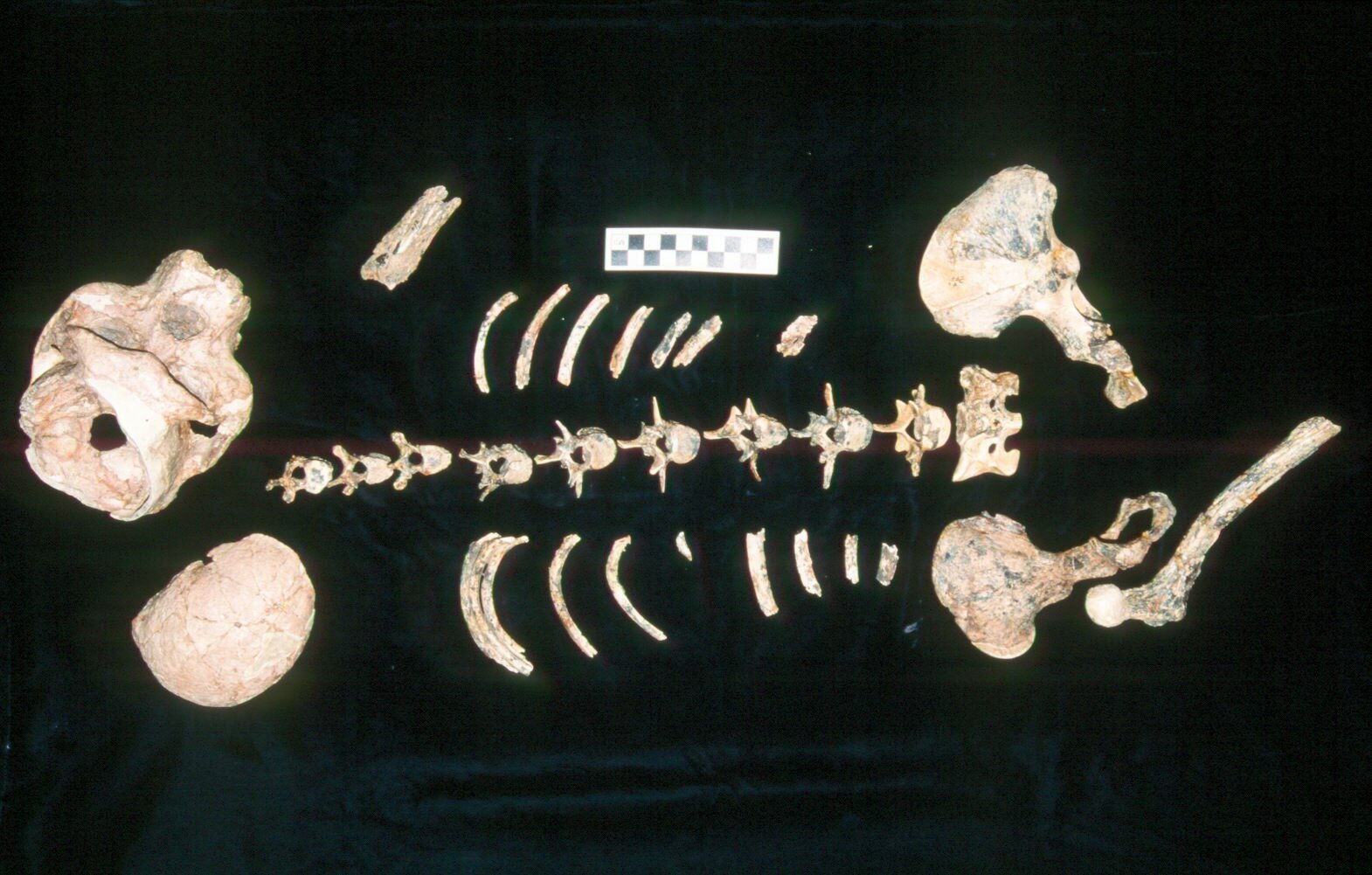THE SKELETON OF MRS PLES ?
News release July 2002
Transvaal Museum,

The skull of Mrs Ples (left) and the Sts 14 skeleton (right)
Download of slide permitted. Acknowledgement - Transvaal Museum
The celebrated Mrs Ples, otherwise known as "Mr" or even "Master" Ples, may have a skeleton. This has been suggested by Dr Francis Thackeray of the Transvaal Museum and his two French colleagues, Dr Dominique Gommery (from Paris) and Professor Jose Braga (from Bordeaux), who have published their views in the latest issue of the South African Journal of Science. Volume 98, pages 211-212.
Mrs Ples is the popular name of the world’s most complete skull of Australopithecus africanus, a species which is well represented by fossils from Sterkfontein in the Cradle of Humankind World Heritage Site, situated approximately 70 kilometres southwest of Pretoria. These fossils are thought to be at least 2 million years old, and are considered to be distant relatives of all humankind.
Mrs Ples was discovered by Dr Robert Broom and John Robinson in April 1947. Only a short time afterwards, a partial skeleton was discovered. This specimen is known by its catalogue number, "Sts 14". The skull and skeleton had been found in the same year and in the same geological deposit. Notably, they had been found in very close proximity to each other. This observation has been supported by recent examination of information relating to work undertaken by Robert Broom and John Robinson. Prior to this study, not much attention had been paid to the spatial distribution of fossils found at Sterkfontein more than 50 years ago. At that time, many fossils were found as a result of miners blasting for limestone, using dynamite. Fortunately there are at least some records which show that Mrs Ples and the Sts 14 skeleton were very close to each other.
Recent X-ray analysis of the roots of the teeth of Mrs Ples has suggested that it was a sub-adult, at the same stage of development as the specimen represented by the partial skeleton.
"When all of these observations are considered together, it seems quite possible that we might have the body of Mrs (or rather Master) Ples", said Dr Thackeray. He acknowledged that this was just a suggestion, based on available facts. "The study of fossils is like detective work", he added.
If the skull of Mrs Ples and the Sts 14 skeleton really do belong to a single individual, perhaps they represent a South African counterpart to the famous fossil nicknamed Lucy, discovered in Ethiopia in 1974 by Don Johanson, Yves Coppens and Maurice Taieb.
Mrs Ples and Sts 14 were discovered 27 years before Lucy was found. Lucy is known as Australopithecus afarensis, from the Afar area in Ethiopia. Mrs Ples and the Sts 14 skeleton belong to a closely related species, Australopithecus africanus.
These fossils point to the fact that it was from Africa that humankind evolved.
In 1871, in a book called "The Descent of Man", Charles Darwin had suggested "our early progenitors lived on the African continent". Research on fossils from Sterkfontein, in the Cradle of Humankind", have supported this view. "South Africa can be proud of its heritage", said Dr Thackeray from his office at the Transvaal Museum. "But what we really need are more South Africans turning to palaeontology as a career". Efforts are currently being made by the Transvaal Museum to promote public awareness of the significance of South Africa’s fossils, as part of Africa’s heritage and also as part of world heritage.
This research has been supported by the National Research Foundation (South Africa) and the Co-operation and Cultural Services through the French Embassy in South Africa.
Dr Francis Thackeray
Telephone
Fax
Cell phone
Website address: www.nfi.co.za
email: and